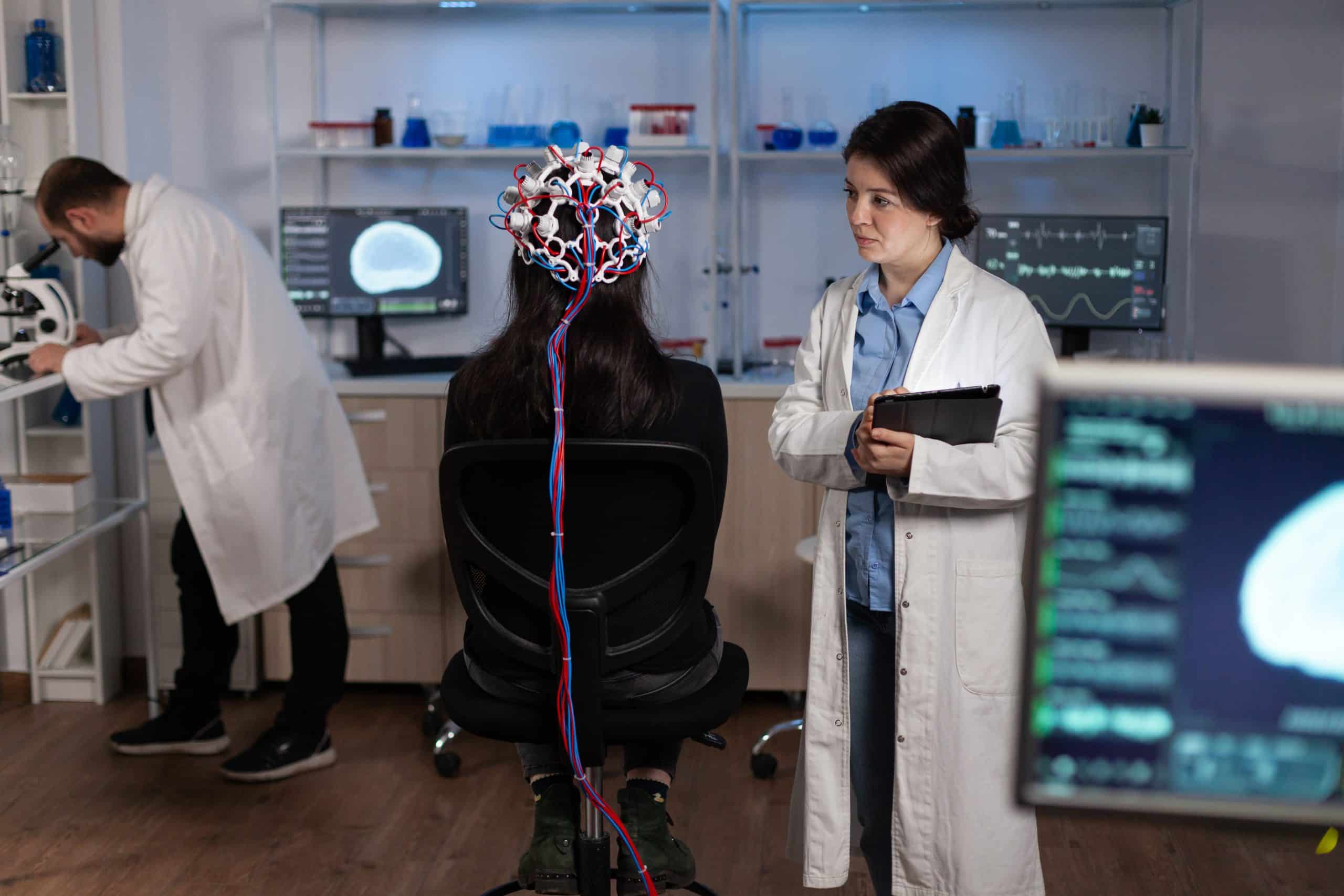How Is Haptic Feedback Technology Evolving in Remote Surgical Procedures?

As you engage with this piece, prepare to embark on an enlightening journey through the fascinating realm of haptic feedback technology and its implications for the future of surgery. You will uncover how this remarkable technology is transforming the way surgeons carry out operations, especially in the context of remote surgical procedures.
Understanding the Role of Haptic Feedback in Surgical Procedures
Before delving into the complex world of haptic feedback in surgery, it’s crucial to grasp what this technology encompasses. Haptics is a term derived from the Greek word ‘haptikos,’ meaning related to the sense of touch. In essence, haptic technology, also known as haptic feedback, replicates the sense of touch by applying forces, vibrations, or motions to the user. This enables a person to ‘feel’ and interact with a digital device or system in a tactile manner, making the experience more immersive and lifelike.
A lire aussi : What Innovations Are Happening in Biometric Payment Technology?
In the realm of medical technology, haptic feedback has emerged as a game-changer, particularly in robotic-assisted surgical procedures. It allows surgeons to ‘feel’ the tissues and organs they are working on, albeit virtually. This feedback is particularly vital in delicate procedures where precision and control are paramount.
The Advent of Haptic Technology in Robotic Assisted Surgery
Robotic technology has revolutionized the world of surgery. The first robotic-assisted surgery was performed in the late 20th century, and since then, this technology has evolved leaps and bounds. It allows for more precise, minimally invasive surgical procedures, which leads to reduced recovery times and a lower risk of complications.
A lire en complément : Can AI Assist in Creating More Accurate Maps for Autonomous Navigation?
However, one significant drawback of early robotic surgical systems was the lack of haptic feedback. Surgeons relied solely on visual cues, which often resulted in decreased tactile sensation and, in turn, could affect the surgical outcomes. The advent of haptic technology sought to remedy this by providing the much-needed tactile feedback, thereby improving the control and dexterity of the surgeons.
Scholarly Research and Publications on Haptic Feedback in Surgery
Numerous scholarly publications, such as those available on PubMed and Google Scholar, have published extensive research on the role and potential of haptic feedback in surgical procedures. A study published in the Journal of Endoscopic Surgery highlighted how the addition of haptic feedback in endoscopic surgery led to an improved rate of success.
Similarly, a study in the Journal of Robotic Surgery reported that the integration of haptic feedback in robotic-assisted surgery not only enhanced the surgeon’s performance but also significantly reduced the operative time and minimized tissue damage.
While these studies offer promising results, it is essential to remember that haptic feedback technology in surgery is still in its nascent stages, and more research is needed to fully explore its potential and limitations.
Training Surgeons with Haptic Feedback Systems
Haptic feedback systems have also found significant utility in the realm of surgical training. These systems allow trainee surgeons to practice surgeries in a simulated environment that closely mimics the conditions of an actual operation. They can ‘feel’ the tissues and organs, understand how much force to apply, and learn to make precise and controlled movements. This hands-on experience, coupled with the ability to repeat the procedure multiple times without any real-life consequences, can significantly enhance their learning curve.
Companies like Google and others are developing advanced haptic feedback systems for surgical training. Google, in collaboration with the medical technology company Medtronic, has developed a virtual reality surgical simulator with haptic feedback, providing trainees with a highly realistic and immersive training experience.
Future of Haptic Feedback in Remote Surgical Procedures
As the world becomes increasingly digitized and connected, the demand for remote surgical procedures is likely to rise. In such a scenario, haptic feedback technology can play a pivotal role by allowing surgeons to perform operations remotely, with the same level of control and precision as traditional surgery.
Although the implementation of haptic feedback in remote surgery faces several challenges, such as latency issues and the need for high-speed, reliable internet connections, advancements in technology are gradually overcoming these obstacles. With the continuous evolution and refinement of haptic feedback systems, the dream of performing complex surgeries from anywhere in the world is gradually turning into a reality.
The journey of haptic feedback technology in surgical procedures is indeed an exciting one, filled with immense potential and endless possibilities. As this technology continues to evolve and mature, it will undoubtedly lead to a paradigm shift in the way surgeries are performed, making them safer, more efficient, and accessible to all, regardless of geographical boundaries.
Haptic Feedback and Artificial Intelligence: A Synergistic Relationship
In the realm of medical technology, the convergence of haptic feedback and artificial intelligence (AI) holds great promise. These two technologies, when combined, can heighten the effectiveness of remote surgical procedures to an unprecedented level.
Artificial intelligence is revolutionizing the healthcare sector in numerous ways, from precise patient diagnosis to predicting treatment outcomes. It has the potential to augment the capabilities of haptic feedback in robotic-assisted surgery, thereby further enhancing the precision and control available to surgeons.
For instance, AI can help in processing and interpreting the copious amounts of data generated during a surgical procedure in real time, providing surgeons with valuable insights. These insights can then be translated into tactile cues through haptic feedback, offering a higher level of situational awareness to the surgeons.
Furthermore, Google Scholar has published numerous studies showing the potential of AI in predicting the tactile properties of tissues and organs, based on medical images. When integrated with haptic technology, this could allow surgeons to ‘feel’ the physical properties of the tissues they will be working on before the surgery, thereby aiding in better surgical planning.
However, the integration of AI with haptic feedback in remote surgery does pose certain challenges. These include the need to ensure data privacy and security, the risk of over-reliance on AI, and potential ethical issues. These challenges, though, are not insurmountable and can be addressed through robust regulatory frameworks, continuous training of healthcare professionals, and ethical guidelines for AI use in healthcare.
Conclusion: The Changing Landscape of Surgery with Haptic Feedback
As we delve deeper into the 21st century, haptic feedback technology is set to redefine the landscape of surgery, particularly in the domain of remote surgical procedures. This innovative technology has the potential to make surgeries more precise, less invasive, and more comfortable for the patient.
Its incorporation in robotic systems has already led to significant improvements in surgical outcomes. With the synergistic combination of haptic feedback and artificial intelligence, we can expect the emergence of smarter, more intuitive surgical systems that offer unprecedented levels of control and dexterity to surgeons.
Moreover, the use of haptic feedback in surgical training is creating a new generation of surgeons who are adept at handling the complex demands of modern surgery. This, in turn, leads to a higher quality of healthcare delivery and improved patient outcomes.
However, it is crucial to note that the journey of haptic feedback in surgery is still in its early stages. There are several challenges to overcome, such as latency issues in remote surgery and the need for high-speed, reliable internet connections. But with the relentless pace of technological advancements and the ongoing research in this field, it is only a matter of time before these challenges are overcome.
In the words of Dr. Atul Gawande, a renowned surgeon and writer, "We are at the cusp of a revolution in surgery." As the horizon of haptic feedback technology broadens, we can look forward to a future where surgical procedures are not bound by geographical limitations and where quality healthcare is accessible to all.
